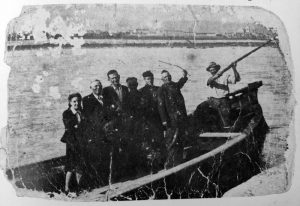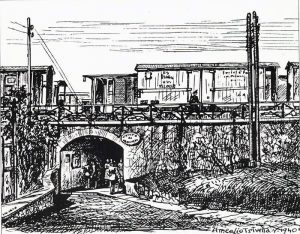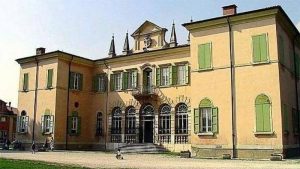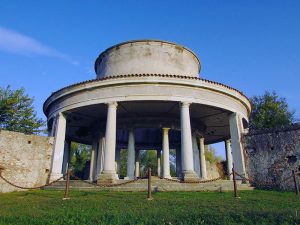An ancient village on the left side of the Adige River, Porto San Pancrazio’s development is linked to the events of the river. It has always governed the life and moods of the people of the Porto, ever since the first inhabitants lived off its resources (fishing, sand, gravel, motive power for the mills).
As its name indicates, the “Porto” was the docking and ferry point to the opposite shore, where a sort of steel wire raft connected the Porto to the Saltuclo area.
During the 19th century the village underwent profound transformations with the construction of the cemetery, the Milan-Venice railway line and the Porta Vescovo station.
Before the last war, Porto San Pancrazio looked like a farming community all stretched out on the edge of the moraine overlooking the Adige between rows of mulberry trees, peach trees and willows. People strolled along its shores during the day, in the sun, or in the evening when the moon shone. You could feel the coolness on summer evenings, the fearful overflow of its waters in floods. Hunters and fishermen came and went in constant activity, attentive to the steps of migratory birds and the colour of the water.
A hundred or so houses, homes of fishermen, hunters, sandmen and small craftsmen, a little over a thousand inhabitants, eight streets dedicated, except for two, to half a dozen free thinkers in the odour of heresy: Giordano Bruno, Tommaso Campanella, Girolamo Savonarola, Galileo Galilei, Arnaldo da Brescia, Paolo Sarpi. An obvious legacy of the barricaded anticlericalism, but also a little romantic, that pervaded the socialist town councils at the turn of the century.
During the last war, the village was heavily bombed, and from the 1950s onwards it underwent reconstruction and subsequent development.
( “28 marzo 1944, Il Porto quel giorno”, Verona City Council, District 7, 1984; “Porto San Pancrazio, Storia di una comunità”, Cirillo Boscagin)






